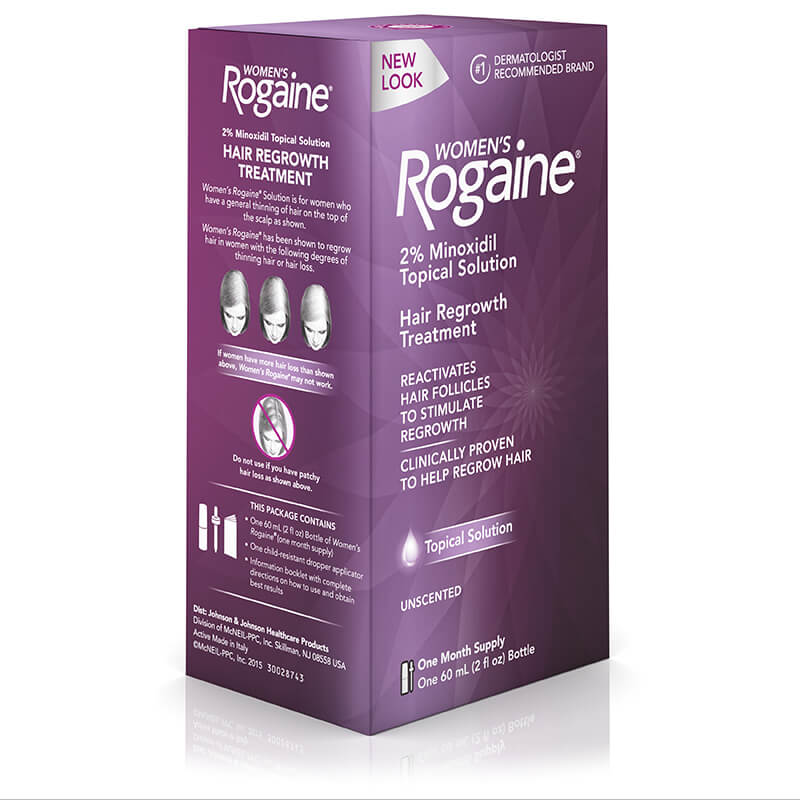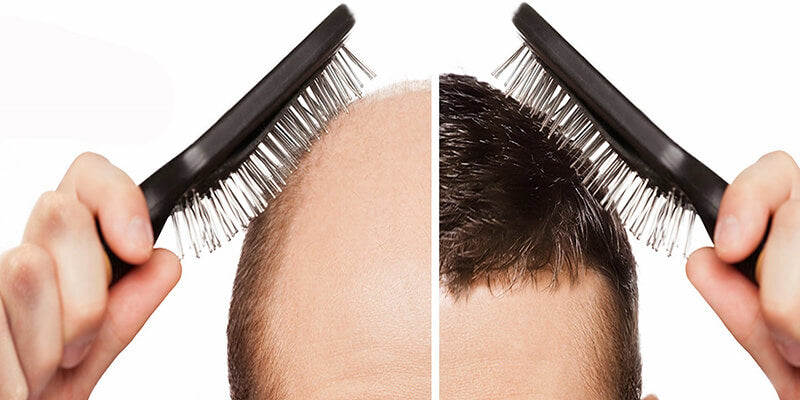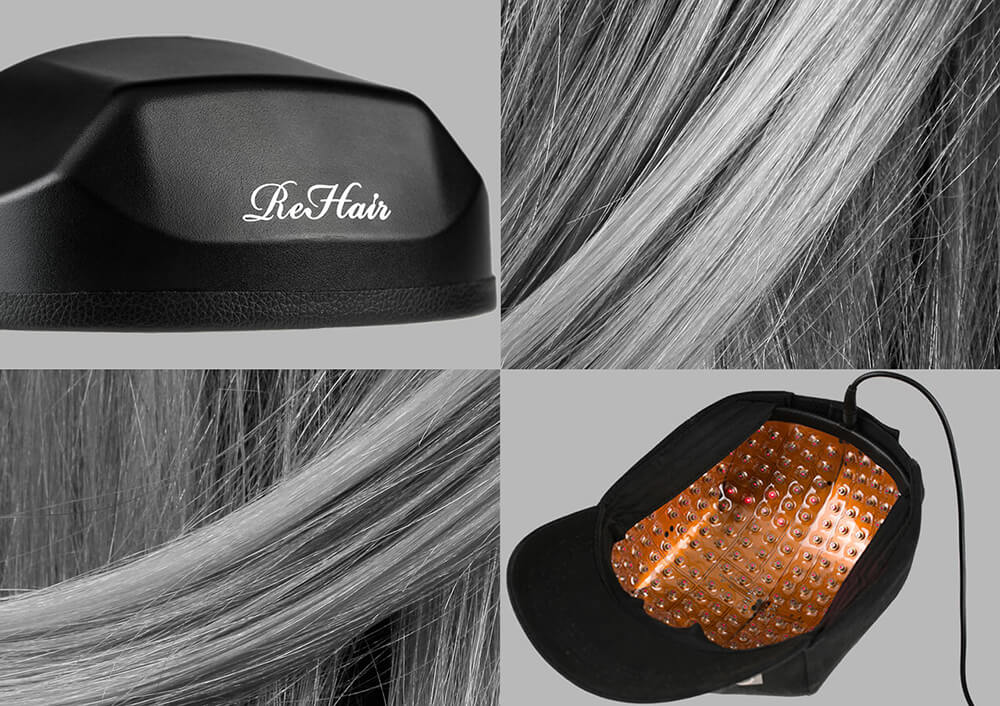Hair loss has been a problem as long people have aged, and history is full of attempts to try to find a solution — ranging from head massages to hippopotamus fat pomades to the urine of young horses (really). In fact, all you have to do is open up your Spam inbox to find messages screaming about the latest (bogus) fixes for baldness. While there are no shortage of proposed offerings, only a limited number of treatments that have been identified as being truly effective. They fall into one of three main categories: medication, surgical procedures, and laser therapy; their goal is to either promote hair growth or slow hair loss (and the earlier they are used, the more effective they are). Each of these is explored in greater depth below.
 ◆Medication – There are two main medications that have been approved by the Food and Drug Administration (FDA) for the treatment of hair loss; they are as follows:
◆Medication – There are two main medications that have been approved by the Food and Drug Administration (FDA) for the treatment of hair loss; they are as follows:
◇Minoxidil (Rogaine): Perhaps the most famous baldness drug, Minoxidil is an over-the-counter product in foam or liquid form that can be used by men or women. Users rub it into their scalps twice a day. Evidence has shown that they tend to experience hair regrowth, slowed down hair loss, or both. The drug’s impact is strongest 16 weeks into usage, and it needs to keep being applied in order to maintain its benefits. Potential side effects can include irritation of the scalp, undesired hair growth on the hands and face, and a quickened heart rate. Sometimes the recommending dermatologist combines it with another solution for more effectiveness.
◇Finasteride (Propecia): This is a prescription drug in pill form that is only available for men. Users take it daily (1 mg); it works by preventing the body from producing dihydrotestosterone (DHT), a male hormone. Evidence has shown it slows down hair loss (on about 88% of users), and, to a lesser extent, helps stimulate hair growth (about 66%). It
starts working within six weeks of usage, and like Minoxidil, use must be continuous to retain benefits. Side effects are rare (in about 2% of users) but include a weakened sex drive/sexual function and a greater risk of prostate cancer. Pregnant women are advised to avoid touching broken or crushed tablets of the drug. Other medical treatments have been less successful; they include the following:
◇Corticosteroid: This solution is used if hair loss is caused by bodily inflammation. It consists of a shot that a dermatologist injects into one’s scalp to reduce the flare-up; that said, there is also a pill form. The shots are given on a monthly basis, and results can take up to a month to see. Note that it is not the same as an anabolic steroid.
◇Immunosuppressants: When applied to the scalp, this treatment has been shown to reverse alopecia areata on a temporary basis; that said, the possible side effects have made most potential users leery.
◇Hormonal modulators: This solution, which consists of oral contraceptives or antiandrogens like flutamide and spironolactone, has been recommended for female-pattern hair loss resulting from hyperandrogenemia.
Further Reading: Female Pattern Hair Loss Treatment Success Stories

◆Surgery – The most common type of permanent hair loss leaves only the top of the head balding. In the case that medication does not work, one can consider a variety of surgical procedures to see if they will be successful, as described below. The main downsides are that they are expensive and sometimes painful, with possible risks including scarring and infection. Dermatologists will often recommend a solution based on amount of hair lost.
◇Hair Transplantation: The most prominent procedure, it involves removing skin (tiny plugs) that feature strong hair growth from the sides or back of the scalp, and implanting it into balding parts of the scalp. The process may take from 4-8 hours, and follow-up sessions may be scheduled to ensure stronger results. Hair that is transplanted tends to fall out after a few weeks, but then permanently regrows after a few months. Patients may be advised to take a hair loss medication prior to and after the procedure to enhance the outcome.
Related Reading: How to Reduce Hair Fall in Men and Grow New Hair?
◇Scalp Reduction: This involves removing bald parts of the scalp and pulling hair-featuring parts closer together. It can be carried out by itself or in tandem with a hair transplant (the latter option helps produce a more natural-looking hairline).
◇Scalp Expansion: This involves inserting certain devices beneath the scalp for a period of about three to four weeks to stretch the skin. The activity may be conducted prior to a scalp reduction to make the scalp more relaxed. It also can be carried out primarily to stretch hair-bearing areas.
◇Scalp Flaps: This involves surgically moving a hair-bearing segment of scalp and transferring it to where hair is needed.

◆Laser Therapy – If a hair loss sufferer has not had success with medication or surgery, or is hesitant to try either, he/she may consider utilizing laser therapy. Evidence indicates that a low level laser therapy device may be useful in treating pattern baldness by stimulating hair growth. A study of 141 female and 128 male individuals found that such a device lead to an improvement in hair loss condition and increased hair thickness among participants. No side effects were identified but the researchers claimed that more work was necessary to determine long-term potential effects. Commercially, these devices are available as laser combs, brushes, laser cap and other tools that emit laser light. A note – because the FDA places these products in the same category as medical devices, they do not receive the same rigorous testing as medications. As such, their long-term safety and effectiveness is relatively known.
Some hair loss patients eschew medical treatments such as the ones described on the last few pages, preferring natural methods instead. The next few pages highlight alternative solutions that have been recommended by some or show some promise.
◆Saw palmetto – Saw palmetto has generated some buzz as a potential problem-solver of male hair growth. The herb showed some promising results in some trials, including one revealing a mild benefit in those with mild to moderate androgenetic alopecia. It has the support of James A. Duke, Ph.D., author of “The Green Pharmacy” and an established authority on healing herbs. He indicates that, similar to Propecia, saw palmetto inhibits the conversion of testosterone to dihydrotestosterone. A recommended dose would be 160 mg of an extract standardized to 85-95% total fatty acids two times a day.
◆GLA - Dr. Andrew Weil, a doctor and a best-selling author on holistic health, recommends that hair loss sufferers try black currant oil or evening primrose oil or black currant oil (in capsule or soft gel form, from a health food store); both contain the essential fatty acid called GLA (gamma-linolenic acid). He suggests that customers take 500 mg of one of the two times a day, and advises to weight six to eight weeks for results.
◆Viviscal – Stacy Cox, an aesthetician an on-camera beauty consultant, started noticing signs of hair loss in her 30s when her divorce began causing her stress. She experimented with a number of talked-about pills, including biotin supplements and horsetail extract, but none of them helped. Then she tried Viviscal, an all- natural supplement that combined numerous ingredients, including horsetail extract, Vitamin C, AminoMar C Marine Complex (a proprietary manufacturer ingredient), and other proteins and antioxidants that are known to strengthen hair and support growth. Taking it twice a day, her hair eventually grew back, and she received other benefits including longer nails and clearer skin. The manufacture of the product has conducted clinical trials, but she wanted her own additional proof of its efficacy, so she used it on a handful of patients and saw amazing results. She now continues to take the product daily.
Dr. Glynis Ablon, an assistant professor at UCLA and owner of Ablon Skin Institute in Manhattan Beach, heard about Cox’s success and decided to carry out her own study. Three months into the process, she also saw positive outcomes. Specifically, she saw over 100 percent hair growth among some patients who were actually counting their hairs – for example, they would begin at 200 to 300, then see 400 to 600 after the three month period. The study included women and men from ages 20 to 70; there were no adverse events or side effects. Viviscal has two varieties: a professional strength one only available via prescription, and an over-the-counter version.
◆Additional supplements – In a poll on WebMD, users rated lavender oil as a “possibly effective” treatment for baldness; this aligns with reports that say that the substance may help address patchy spots when mixed with oils from rosemary, thyme, and cedar wood. The users also indicated Atlantic Cedar showed potential.
Many other supplements have been mentioned in the media as possible solutions; they include biotin, ginseng, aloe vera, bergamot, gingko, hibiscus, and sophora. As of now, no conclusive evidence has been presented indicating that they help in any way.
While hair loss victims may be eager to go their nearest health food store and buy some of the options mentioned in the last few pages, it is a good idea to first consult with their doctor. Doing so can help the health professional keep an eye out for potential side effects, such as interactions with drugs the patient might be taking. In the actual purchase of supplements, customers should look out for a seal of approval from organizations such as NSF International and U.S. Pharmacopeia, which, while not guaranteeing safety, provide some assurance that the product contains what is on the label, does not have harmful levels of contaminants, and was properly manufactured.

